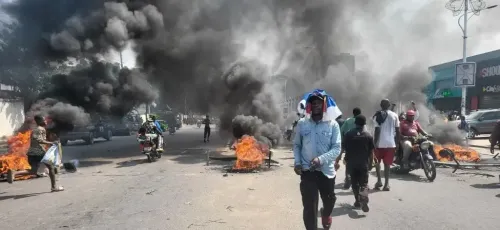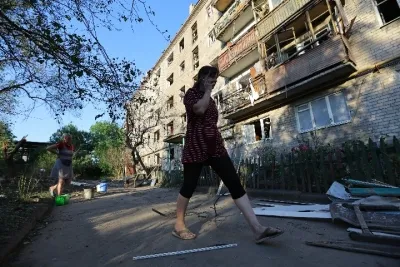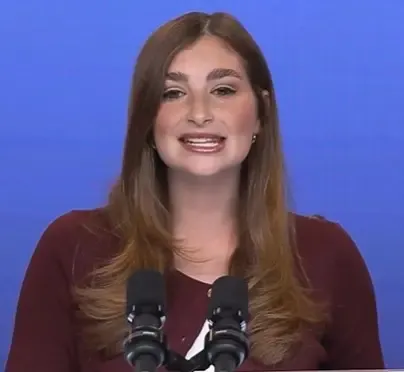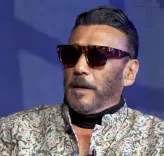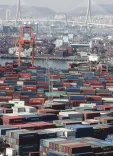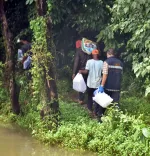Did the Putin-Trump Meeting Resolve the Anchorage Peace Deal?
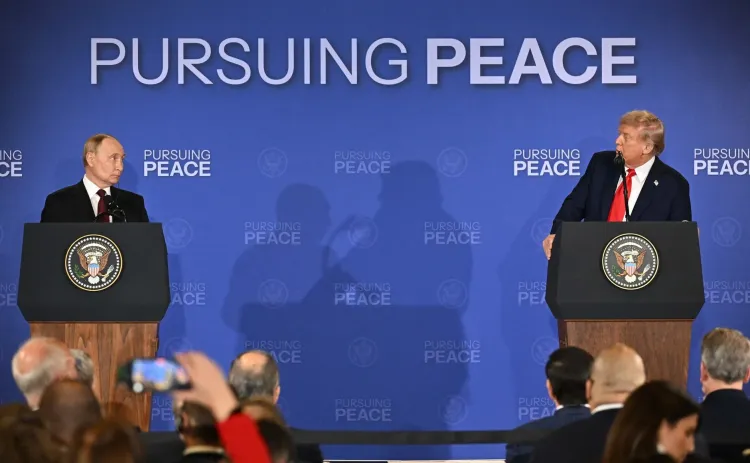
Synopsis
Key Takeaways
- Strengthened US-Russia Relations: The summit marked an important step in diplomatic engagement between the two nations.
- Focus on Ukraine: The discussions centered on Ukraine's role in any peace agreement and the need for its consent.
- Security Guarantees: NATO-like guarantees were proposed as a compromise to ensure Ukraine's safety without full membership.
- European Concerns: European leaders remain wary of the implications of the summit and its potential impact on regional security.
- Future Negotiations: A trilateral meeting involving Russia, the US, and Ukraine is set to take place soon to further discuss the peace process.
Washington: The incomplete peace discussions held in Anchorage between US President Donald Trump and his Russian counterpart Vladimir Putin played a significant role in strengthening the US-Russia bilateral relationship. Following the summit, Trump remarked that the conflicting parties were "quite near the conclusion." He emphasized that "Ukraine must consent" to any peace arrangement. Putin asserted that any lasting solution regarding Ukraine must tackle the "fundamental causes" of the conflict while considering Russia's genuine concerns. "A just equilibrium of security in Europe and worldwide must be guaranteed," Putin declared. "Attempts to undermine progress through provocations and covert maneuvering should be avoided," he insisted.
The Anchorage Summit, which took place on August 15, marked the first encounter between Putin and Trump during the latter's second presidential term. Previously, they had met six times during Trump's first term. Genuine diplomacy at a high level was evident, and while no agreement was reached, the dialogue between the two leaders indicated a willingness to continue negotiations. Both acknowledged that they were progressing in the right direction.
Putin's proposal did not include a ceasefire unless a comprehensive agreement was established. Moscow suggested that Kyiv should "completely withdraw from eastern Donetsk and Luhansk oblasts" in exchange for a Russian commitment to freeze the frontlines in the southern regions of Zaporizhzhia and Kherson. Additionally, Russia expressed readiness to return relatively small areas of land in northern Sumy and northeastern Kharkiv oblasts. It may also demand that the Russian language be granted official status in specific regions and that the Russian Orthodox Church (Moscow Patriarchate) operates independently within Ukraine. Ukrainian legislation currently prohibits the activities of Russia-linked religious organizations.
The remarks made by Putin and Trump following the Anchorage Summit were supported by a modus operandi distinct from that of European leaders. During the summit, both leaders showcased their personal rapport, which proved crucial in navigating the intricate and challenging negotiations. The atmosphere at the joint press conference was characterized by politeness, courtesy, and mutual respect.
The real challenge of the Anchorage Summit was how the Trump administration engaged with Europe, which was seeking a ceasefire agreement. Tensions were palpable, with European leaders, including Zelensky, meeting Trump in Washington shortly after. Europe presented a united front against Russia. Zelensky’s second visit to the White House since February 28 posed a more significant challenge for him. Following this meeting, Trump had a phone call with Putin to update him on developments.
Russia has consistently opposed Ukraine's potential NATO membership. In contrast, Ukraine seeks security assurances and aspires to join NATO. However, Trump has unequivocally stated, "no NATO membership for Ukraine" as part of the peace agreement. According to Steve Witkoff, during the Anchorage Summit, Putin agreed to permit Ukraine's allies to provide it with NATO-like Security Guarantees as part of a future agreement to conclude the conflict. The notion of NATO Article 5-style protection for Ukraine is currently under consideration. The US and EU are poised to support such guarantees for Ukraine. Last year, Putin acknowledged this and it was included in the draft 2022 peace treaty that proposed NATO-like Security Guarantees for Ukraine in exchange for neutrality, demilitarization, and denazification.
The US and Europe's proposal to offer NATO Article 5-like Security Guarantees to Ukraine, rather than NATO membership, could significantly change the landscape as it represents a substantial concession from Russia for the peace deal. Furthermore, Russia would implement a law prohibiting attacks on any other European nation and infringing upon its sovereignty.
However, British Prime Minister Keir Starmer finds himself at odds with President Trump over Ukraine’s NATO ambitions, asserting that Kyiv is on an "irreversible path" to NATO membership. European leaders firmly believe that Zelensky is being pressured into a peace agreement brokered by Trump, which may grant concessions to Russia. Trump's assertions about the US potentially engaging in Security Guarantees for Ukraine seemed to appease the European leaders, who expressed their admiration for him.
It has been reported that Kyiv has submitted proposals for new security arrangements to the US, pledging to purchase USD $100 billion worth of arms and weaponry, including 10 US Patriot Air Defense Systems (ADS) along with additional missiles and defense equipment to safeguard its cities and critical infrastructure. Europe is expected to finance this. Additionally, Kyiv and Washington plan to establish a USD $50 billion deal to manufacture drones with Ukrainian firms. Separately, Kyiv demands full compensation from Russia for wartime damages to be covered by the USD $300 billion in Russian sovereign assets frozen in Western nations. Earlier this year, in Riyadh, Russia hinted that it might utilize the frozen sovereign assets to aid in rebuilding Ukraine, especially the one-fifth of the country that Russian forces currently control.
In the meantime, Trump took to social media to discuss the Security Guarantees that various European nations would extend to Ukraine, with the US coordinating the efforts. Trump highlighted that a trilateral meeting involving Russia, the US, and Ukraine would be convened within the next two weeks to resolve the Ukraine issue. The location for the meeting would be determined between Putin and Zelensky.
In the coming days, the peace agreement is expected to be finalized with no margin for error or misunderstanding. The visit of eight European leaders to the Oval Office, including Zelensky, confirmed that the trans-Atlantic divide is significant. Furthermore, the Putin-Trump Summit in Anchorage holds promise for enhancing bilateral relations and potentially bringing an end to the Russia-Ukraine conflict. Understandably, the Putin-Trump alliance could also diminish Europe's stance, which currently appears isolated in its opposition to Russia.

